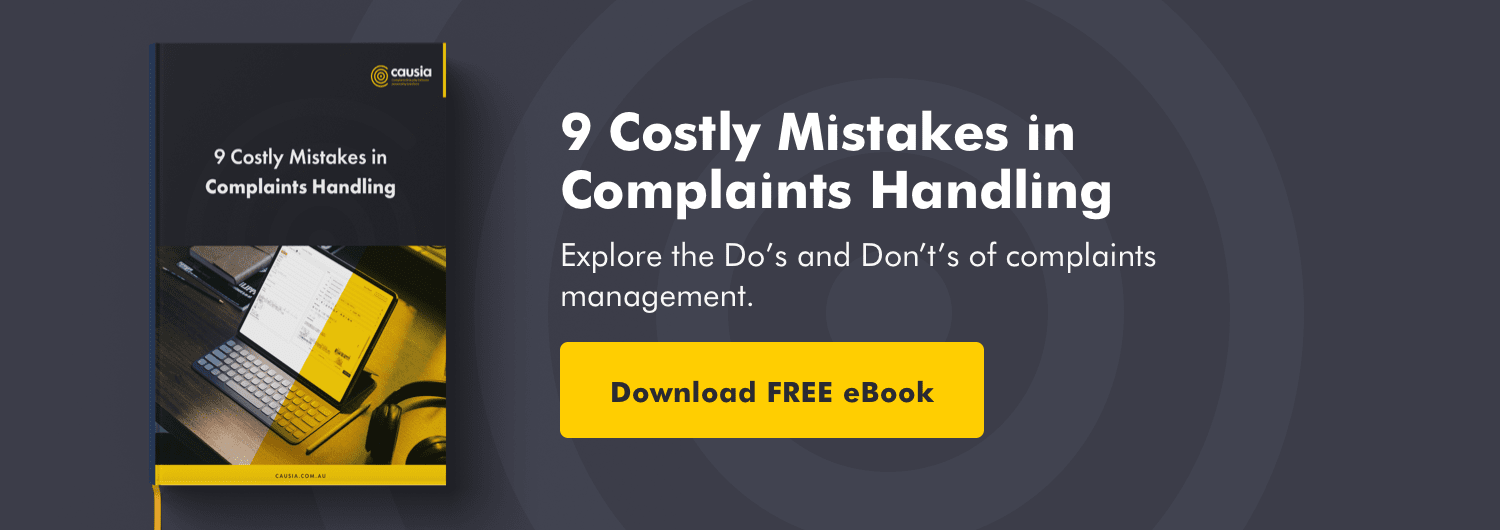One of the worst parts of complaints management is dealing with unreasonable complainants who just won't seem to go away. They might end up sending you dozens of complaints within a week or call you repeatedly within the same day; likewise, they might complain to several different people or on different outlets at once.
These type of complainants usually over exaggerate their grievances, and will definitely make sure you hear about it. A lot.
What is a persistent complainant?
First things first, let's set down a good definition for a "persistent complainant."
A persistent complainant is a person who contacts your company via any outlet-be it phone, in person, or even through facebook or twitter- to voice their complaint in an unreasonable or unnecessarily lengthy manner.
Usually, these complainants have actual grievances (i.e. their product actually produced a failure) but fail to present them in an appropriate manner. They might do any one of the following things:
- Complain about the same issue several times either using the same outlet or several different ones
- Use excessively aggressive language, often suggesting unreasonable ways that complaints managers should deal with complaints (i.e. "You need to fire your entire staff over this problem! This is unacceptable!"
- Deliver unjustified complaints and angrily or obsessively insist on corrective action plans and unreasonable perusal of their complaint
Note that persistent complainants are not defined by their actual compliant, but by the way they deliver said complaint. They can present either justified or unjustified complaints.
For more information about these types of complaints, feel free to check out Reacting to "Unjustified Complaints" .

Photo via wordpress.com
How do you react to a persistent complainant?
Complaints managers who must deal with persistent complainants must always keep their behavior in check. It is extremely easy to lose your cool when someone is screaming at you, but it’s a mark of professionalism when you stay calm.
Ideally, complaints managers should stay as calm and as polite as possible during their entire interaction with complainants especially if they are met with aggressiveness.
Should this exchange take place online, complaints managers should be sure to double check that each of their responses remains appropriate and helpful, and cannot be misconstrued into any other meaning. Angry customers will be quick to twist your response to further place blame on you, so be sure to convey everything in a very clear manner.
If, however, this exchange takes place over the phone or in person, extra measures must be taken. Complaints managers who take phone calls must make sure that their voice intonation and word choices reflect professionalism and helpfulness. If you find yourself getting angry or worked up your voice tone will no doubt change; this is why you must continuously monitor the way you speak to customers.
Even if what you say is polite, customers can still react to how you say it. So keep both the how and the what professional.
Body language should also match your voice; don’t stand aggressively by crossing your arms or looking down at customers. Smiles and eye contact go a long way.
On the very rare occasion that you deal with a physically aggressive complainant, it’s wise to call for backup. And if you can’t resolve the complaint with your staff at hand, it might be time to call the authorities.
What should your plan of action be?
Now that we’ve established what a persistent complainer is and how to speak to them, its time to talk about the actual complaints management process.
Remember, regardless of the way your complainant delivers their complaint, they are still a valued customer that should be listened to-no matter how annoying they get.
After you have established whether their complaint is justified or unjustified, you can then move on to creating a corrective action plan, which is usually only used to answer the former type of complaint.
You should then start with the traditional complaints management process i.e. thanking the complainant for their input, finding the root causes of their problem, creating an action plan, and following up with the complainant.
Because a persistent complainant requires particular care, you can build upon the traditional process by communicating and following up with the complainant a little more frequently.
Keep in mind that a persistent complaint really is the same as any other complainant, but just requires a bit more patience to deal with. It isn’t a virtue for nothing!



